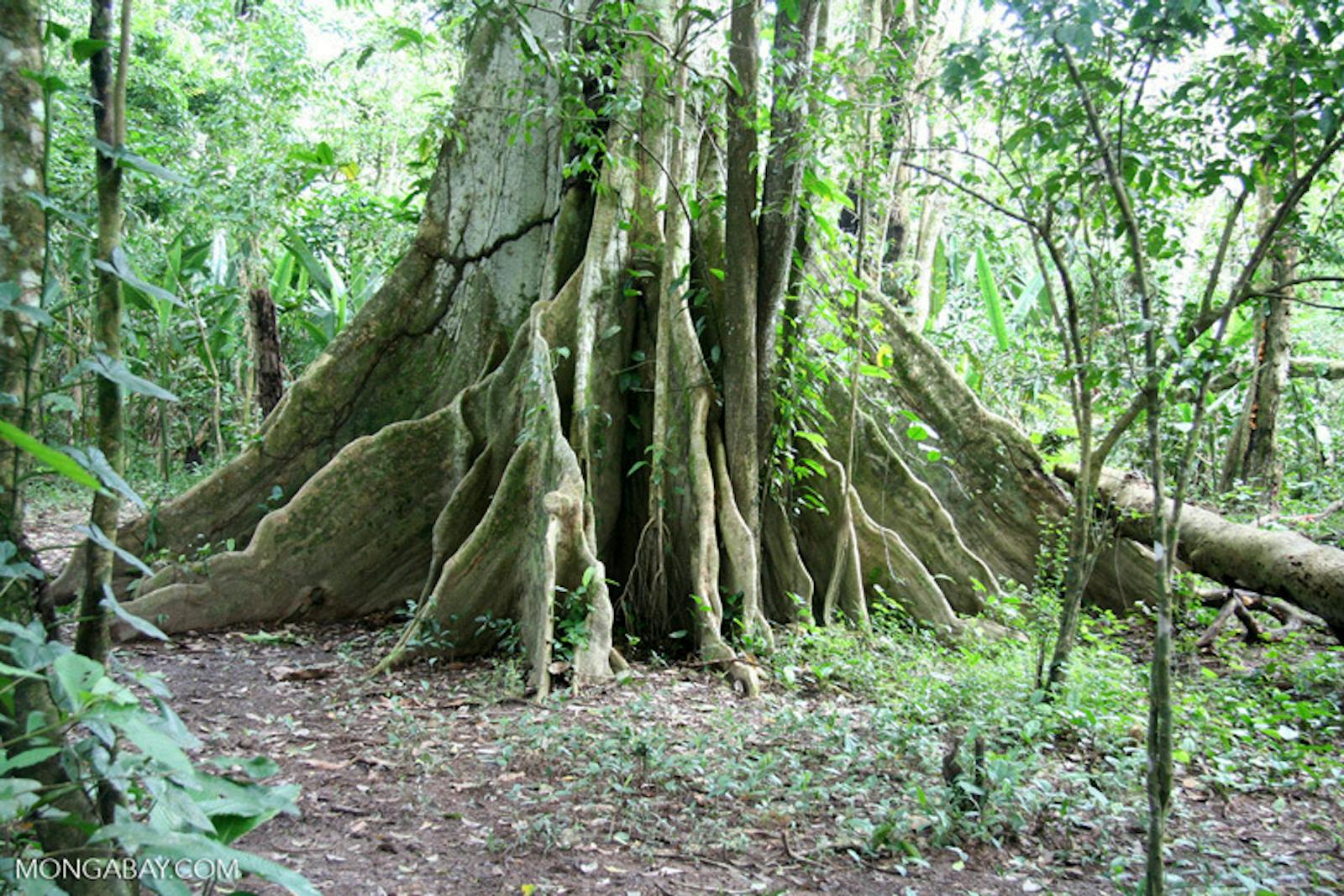Solimões-Japurá Moist Forests
The ecoregion’s land area is provided in units of 1,000 hectares. The protection goal is the Global Safety Net (GSN1) area for the given ecoregion. The protection level indicates the percentage of the GSN goal that is currently protected on a scale of 0-10. N/A means data is not available at this time.
Bioregion: Central Amazonian Forests (NT19)
Realm: Southern America
Ecoregion Size (1000 ha):
16,805
Ecoregion ID:
503
Protection Goal:
98%
Protection Level:
3
States: Colombia, Peru, Brazil
The ocellate river stingray is one of the many inhabitants of the Solimões-Japurá Moist Forests ecoregion. Although not usually an expected resident of terrestrial ecoregions, these freshwater rays frequently migrate with rivers and streams and inhabit the forest floor when it is flooded during the rainy season. Flooded forests provide a unique opportunity for rays and other fish to live among the trees. This species is well known by locals and commonly harpooned and collected for food. During warmer months, they can be found half-buried in the cooler sands at the bottom of the rivers. It is also referred to as the peacock-eye stingray owing to distinctive spots on the back of its disc-like body; often, juveniles will be sold in the ornamental pet trade for this attractive pattern.
The Solimões-Japurá Moist Forests ecoregion lies on well-drained upland tertiary alluvial plains (flat areas created by sediment deposits from rivers over long periods of time) in western Amazonia. The region straddles the Putumayo River, which forms the Peru-Colombia border on its northern end, extending east to the interface between the Japurá (Caquetá) and Solimões (Amazon) Rivers in Brazil. The western extent is well before the lowest foothills of the Andes near Puerto Laguízamo, Colombia. Elevations range from 100–220 m. Major river systems that drain this region are the Caquetá, Napo, Amazon, and Putumayo, with many tributaries throughout.
The soils are generally nutrient-poor oxisols and ultisols and are rich in aluminum and iron. The climate is humid, reaching 3,000 mm/yr of rain and an average temperature of 24°C. This region primarily hosts tall, dense, evergreen tropical rain forests in both flooded and non-flooded areas with a corresponding range of species, the tallest of which include kapok, crabwood, and Terminalia amazonia. Many of these forests host an abundance of lianas (woody vines), palms, epiphytes (plants growing on other plants), and many mosses and ferns, which create a dense understory.

The flagship species of the Solimões-Japurá Moist Forests ecoregion is the Ocellate river stingray (Potamotrygon motoro). Image credit: Steven G. Johnson, Creative Commons
The floristic diversity of the ecoregion accordingly harbors a high diversity of mammals, insects, amphibians, reptiles, and birds. 181 mammals have been recorded, including primates (marmosets and sakis), jaguar, margay, Sechuran fox, bats, manatee, three species of anteater, tapir, armadillo, and deer. Approximately 542 bird species are known—some restricted to this ecoregion or are found only in a few other places—including blue-tufted starthroat, pavonine quetzal, ochre-striped antpitta, and white-eared jacama. Reptiles, fish, and amphibians are abundant.
The Arrau turtle—the largest freshwater turtle in Latin America—coexists with black caiman and anacondas throughout this ecoregion’s rivers, as well as with ocellate river stingray and two species of piranha. Other reptiles of interest include lanceheads, palm pit vipers, boa constrictors, emerald tree boas, coral snakes, tegus lizards, and iguanas.
Much of the native habitat in this ecoregion remains intact. Only two short roads (less than 20 km) currently exist in the region. The Colombian Cahuinari and Amacayacu National Parks are situated in this region, together protecting a large swath of land. About one-third of this ecoregion, in Colombia between the Putumayo and Caquetá Rivers, is under the jurisdiction of Indigenous people who practice traditional hunting and gathering and small-scale shifting cultivation. Although Colombia has strong legislation to regulate timber extraction from these forests, enforcement suffers because of insufficient administrative capacity.
Human-induced habitat loss threatens some species of this rich biodiversity. Recent expansions of coca production, logging and mining operations, and cattle ranching have resulted in large deforested areas, particularly along the Caquetá and Putumayo Rivers. Timber species are suffering from overharvest too. For example, mahogany (Swietenia macrophylla) is commercially extinct and can no longer support any trade; tropical cedar (Cedrela odorata) is threatened with local extinction along the rivers.
The priority conservation actions for the next decade will be to 1) encourage native vegetation integration in agriculture and cattle ranches, 2) incentivize locals to keep nearby forests intact through financial subsidies or awareness campaigns, and 3) increase staffing of protected areas.
-
-
1. Sears, R. Marín, C. 2019. Northern South America: northwestern Brazil, southern Colombia, and northern Peru https://www.worldwildlife.org/ecoregions/nt0163 Accessed June 19, 2019.
2. Duivenvoorden, J. F., and J. M. Lips. 1995. A Land-ecological Study of Soils, Vegetation and Plant Diversity in Colombian Amazonia. Wageningen, the Netherlands: The Tropenbos Foundation.
3. Silva, J.M. C. 1998. Um método para o estabelecimento de áreas prioritárias para a conservação na Amazônia Legal. Report prepared for WWF-Brazil. 17 pp.
4. Drioli, M. & Chiaramonte, G. 2009. Potamotrygon motoro. The IUCN Red List of Threatened Species 2009: e.T39404A10226461. http://dx.doi.org/10.2305/IUCN.UK.2005.RLTS.T39404A10226461.en Accessed June 19, 2019.
-


